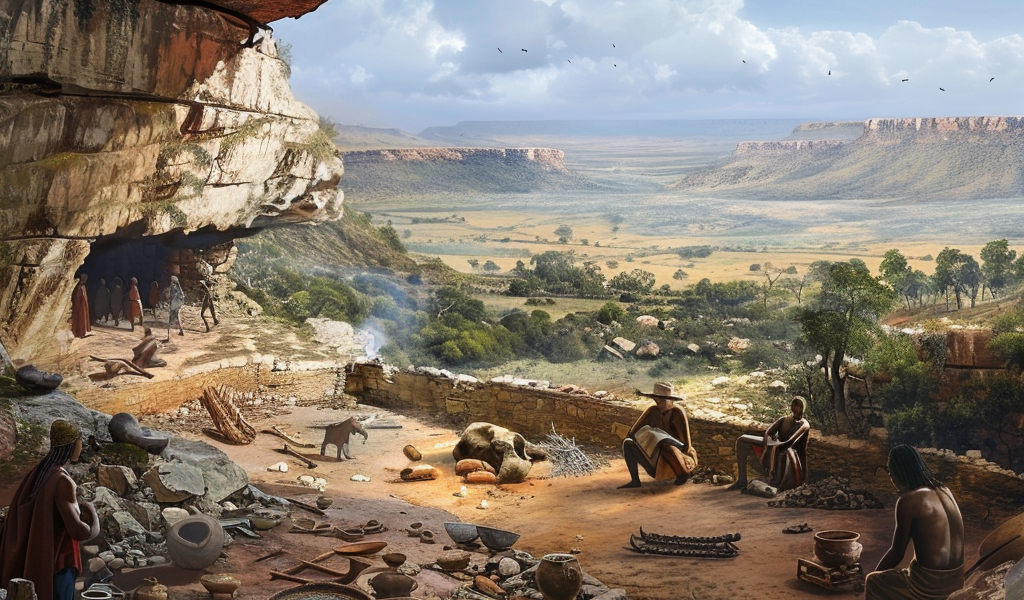In a groundbreaking study, scientists have successfully reconstructed a 10,000-year-old genome from southern Africa, shedding light on the region’s ancient history and its human cultures. This remarkable achievement marks a significant milestone in genetic research, providing insights into some of the oldest known communities in the area.
The research focuses on genomes extracted from individual specimens discovered at the Oakhurst rock shelter, situated in southern South Africa. This site has yielded invaluable information about early human societies, revealing a striking resemblance between ancient populations and modern local inhabitants.
A collaborative effort between researchers from the University of Cape Town and the Max Planck Institute for Evolutionary Anthropology led to the analysis of these ancient genomes. The findings were published in the esteemed journal Nature Ecology & Evolution, highlighting the dynamic nature of genetics while also underscoring the stability of certain characteristics over extensive periods.
One of the most intriguing aspects of the study is the evidence suggesting cultural coexistence between ancient hunter-gatherer societies and pastoralist cultures. This coexistence spanned a considerable timeframe, characterized by minimal genetic upheaval. The findings illustrate how these distinct communities interacted closely, influencing each other’s lifestyles and genetic makeup.
Victoria Gibbon, a researcher at the University of Cape Town, emphasizes the significance of the Oakhurst rock shelter as a critical archaeological site. With over 40 human graves and a wealth of preserved artifacts, it serves as a crucial record of human history that stretches back 12,000 years. The insights gleaned from this site offer a rare glimpse into the lives of early humans and their cultural practices.
The implications of this research extend beyond mere academic interest; they contribute to our understanding of human evolution and migration patterns. By analyzing the genomes of these ancient populations, scientists can trace the lineage and movements of early humans across the continent.
Moreover, the study highlights the importance of genetic research in uncovering the complexities of human history. It demonstrates that while genetic traits may evolve over time, certain aspects of human identity and culture can remain remarkably consistent, even across millennia.
As researchers continue to explore the genetic landscape of ancient populations, the Oakhurst rock shelter stands out as a beacon of knowledge. The findings not only enrich our understanding of southern Africa’s past but also pave the way for future studies that may unravel more mysteries of human history.
With advancements in genetic analysis and archaeological methods, scientists are poised to make even more discoveries that could reshape our understanding of human origins and interactions. The journey into the past is far from over, and each new finding adds another layer to the intricate tapestry of human existence.
As this research unfolds, it invites us to reflect on the deep connections that bind us to our ancestors. The stories embedded in our DNA provide a powerful reminder of the shared heritage that transcends time and geography.
In summary, the reconstruction of the 10,000-year-old genome from southern Africa represents a significant leap forward in our understanding of ancient human cultures. The collaborative efforts of scientists from prestigious institutions have unveiled a fascinating narrative of coexistence and continuity, enriching our knowledge of humanity’s diverse history.
As we continue to uncover the past, the lessons learned from these ancient genomes will undoubtedly inform our perspective on modern human societies and their evolution over time.





